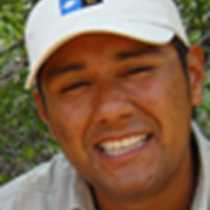Genovesa Island
We had a great day on this island in the northern Galápagos.
The morning arrived with clear skies. Many bird species appeared in the distance; these creatures were coming back from the open ocean, carrying food for their young hatchlings that had been waiting a few days for this opportunity to eat.
Some red-footed boobies were seated on the stern of the National Geographic Endeavour, looking for some of their friends to join them in a spectacular display followed by the frigate birds. The frigate birds were amazing: many males had their red balloons fully inflated and by using different sounds, they attracted many females.
This Island is different from many others because it is one of the best places to nest in one of the most remote places in the entire archipelago. In fact the largest population of boobies is found here and nowhere else in the Islands, which is why we call it the “birds Island.”
Someone spotted the famous short-eared owls along the lava flows; this is a highlight since the flows are the perfect camouflage for this rare bird.
In the afternoon we had spectacular snorkeling on the opposite side of the caldera, where the water was 82.5 F. Some hammerhead sharks appeared in some of the deepest waters along the submarine cliff. It’s great to know that these shy creatures are still in places where man has arrived.
Another great visit was the small beach where many of our guests saw the red mangroves. These trees are known for being one of the preferred nesting places for the red-footed boobies. Juveniles of swallow-tailed gulls and Nazca boobies also shared this habitat with yellow-crowned night herons.
There’s no better place than Genovesa Island to find birds as close as you are reading these words.




